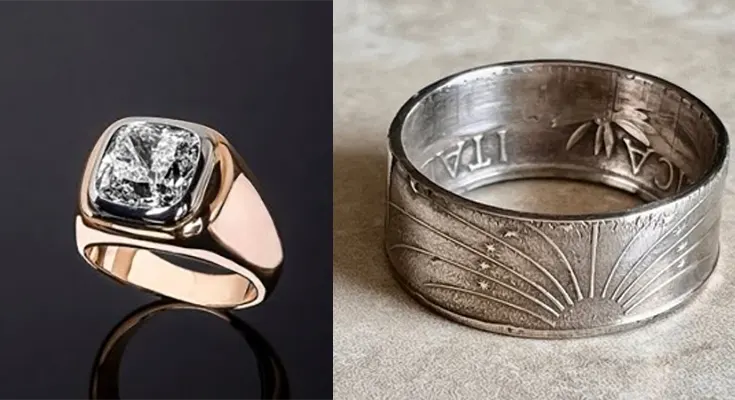In Italian history, royal rings have been symbols of power, wealth, and the enduring legacy of noble families. While modern society may associate rings primarily with personal milestones, such as engagement rings, the historical significance of these pieces of jewelry extends far beyond their ornamental role. In Italy, royal rings have often represented authority, social status, and the political strength of ruling families, often being passed down through generations as valuable heirlooms. This tradition, deeply rooted in the country’s cultural heritage, has elevated rings to objects of immense prestige, often woven into the very fabric of Italian royalty. An engagement ring, for instance, though today often a symbol of love, shares a rich historical lineage with these royal adornments, emphasizing the connection between personal and political power in the context of Italian society.
The symbolism of royal rings in Italy can be traced back to the ancient Roman Empire, where rings were used by emperors and nobility as a way to signify their status and power. The signet ring, for example, was commonly used in Rome as a symbol of one’s authority to issue orders and seal documents. These rings, made from precious metals and often adorned with intricate designs or gemstones, served as more than just personal accessories. They were statements of power. As centuries passed, this symbolism continued into the medieval and Renaissance periods, when royal rings were often intricately designed and used during key ceremonies such as coronations, marriages, and public declarations.
During the Renaissance, Italy became a hub of cultural, artistic, and political significance, and the royal rings worn by the ruling families of states like Florence, Milan, and Venice took on greater artistic expression. Italian jewelers, many of whom were patrons of the Renaissance arts, crafted rings that reflected the rich cultural environment of the time. These rings were often created with the finest gemstones, such as diamonds, rubies, and sapphires, and they incorporated intricate designs meant to represent the wearer’s lineage and political power. The rings of Italian monarchs, such as those belonging to the House of Medici or the Sforza family, were not just personal accessories but powerful symbols of political authority, used to secure alliances, confirm royal marriages, and mark the start of important treaties.
One of the most famous Italian royal rings is the one worn by the Pope during the papal coronation. This Papal Ring, also known as the “Ring of the Fisherman,” has been a part of Italian history for centuries. It symbolizes the Pope’s authority and the Catholic Church’s influence over the people of Italy and beyond. The ring’s design is both simple and powerful, representing the humility of the Pope while simultaneously showcasing the supreme authority that comes with his office. This papal ring is passed on from one pope to the next, solidifying its place as a symbol of unbroken power and tradition.
In modern Italy, the role of the royal ring has evolved but still maintains its prestigious status. Although Italy is now a republic, royal families such as the House of Savoy still hold onto their rings as important symbols of their historical legacy. These rings are often displayed in museums, treasured by collectors, and viewed as pieces of Italy’s cultural and political history.
Additionally, the use of royal rings has influenced the design of more modern jewelry, particularly engagement rings. Though the context has changed, engagement rings today continue to embody the symbolic power and prestige that royal rings once held. Whether passed down through families or given as tokens of love and commitment, engagement rings today retain a sense of importance, much like the royal rings of centuries past.
In conclusion, the royal ring holds a significant place in Italian history, symbolizing not only the personal wealth and prestige of its wearer but also the broader political and cultural dynamics of the time. From ancient Rome to the Renaissance and beyond, these rings have been tangible markers of authority and legacy, transcending generations as a powerful and lasting symbol of Italian heritage. Today, even in the context of modern engagement rings, we can trace the deep-rooted tradition of using rings to signify power, love, and lasting commitment.


